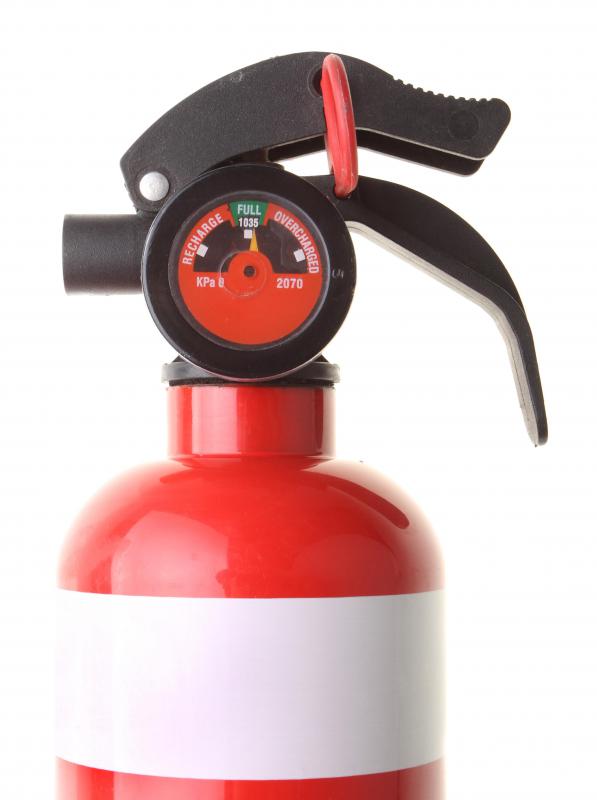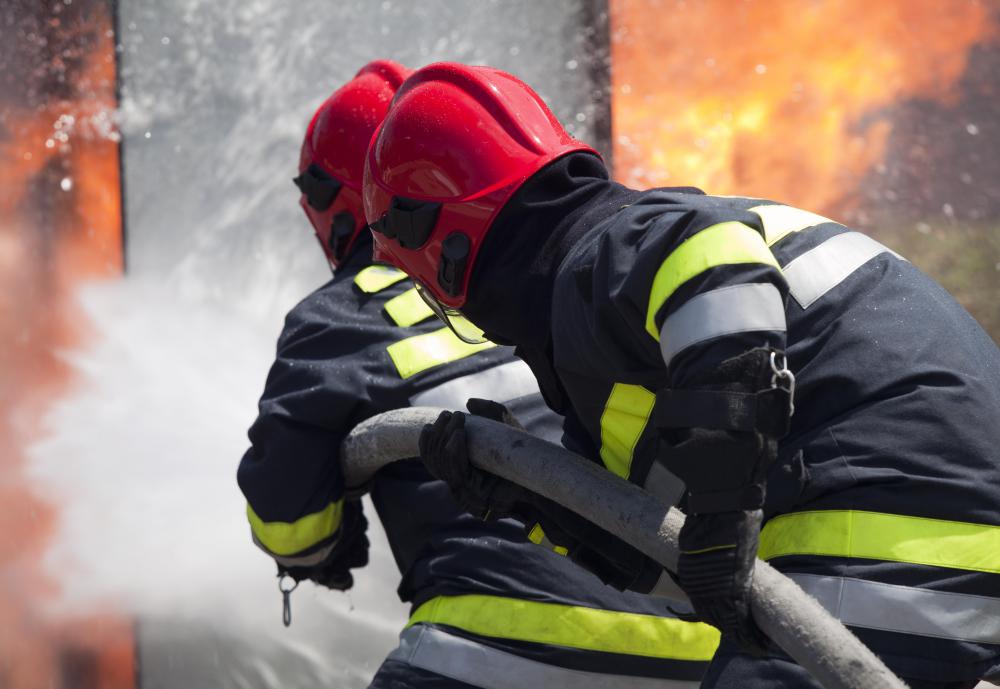At HomeQuestionsAnswered, we're committed to delivering accurate, trustworthy information. Our expert-authored content is rigorously fact-checked and sourced from credible authorities. Discover how we uphold the highest standards in providing you with reliable knowledge.
What is Active Fire Protection?
Active fire protection is the process of protecting a building or structure from fire with methods that use the action of moving parts. These systems can be automatic, or operated manually, but they require some sort of action in order to work. A couple of examples of active fire protection would be building sprinkler systems and fire alarm systems. These systems are an extremely important part of protecting property and the lives of the people within.
An important factor that active fire protection systems share is that they involve action of some kind. Some examples of these actions include slowing the progress of fire, putting out the fire, or notifying of fire and smoke conditions. This is in contrast to passive fire protection, which uses things that slow or contain fire, like fire doors, fire walls, or fire retardant materials but do not put out the fire or take any type of action. Together, both active and passive fire protection systems can control fire and protect lives.

One common component of an active fire protection system is an automatic sprinkler system. The most popular type of sprinkler system uses water to put out or slow the progress of a fire. When heat builds up in the fire area, it causes part of the sprinkler head to melt or break, which releases water from the sprinkler head. Usually only the sprinkler head or heads closest to the fire area will activate.

Water is not always the best choice for fighting a fire. For example, some materials burn with so much heat that water turns to steam instead of putting out the fire. Other types of active fire protection systems that can help to extinguish a fire include foam and chemical systems, which use substances other than water to control a fire. These types of systems would be likely to be used in places where water is not the best choice for fighting a fire, such as certain kinds of factories or warehouses that have large amounts of substances that aren't able to be easily extinguished using water when they are burning.

Active fire protection also includes the use of alarm and detection systems. These are vitally important to protect life and to ensure a quick fire department response. In the most basic form, detection systems can consist of devices placed throughout a building that detect the smoke and heat from a fire. These detectors are extremely sensitive and can notify the occupants of a building of danger with plenty of time to get out of the building and call for help. More involved systems can also notify the fire department automatically, which is useful since buildings are not always occupied.

Finally, it is important to remember that active fire protection can also include manual systems that require human operation. One example of this is the use of fire extinguishers to put out a small fire. Another important example is the use of fire hydrants or water standpipes, together with fire hoses operated by trained firefighters to extinguish a fire completely.
AS FEATURED ON:
AS FEATURED ON:














Discussion Comments
Sporkasia - If you watch TV, you have probably seen fire sprinkler systems coming on and various people getting soaked with water. This happens enough times on TV that you think it must be common. The truth is that sprinkler systems rarely go off for no reason. I don't know the percentage, but if a system activates then smoke, fire or intense heat are probably near by.
Sitcoms and detective pictures are not the best way to learn about fire protection. Watching fictional TV can give you a distorted perception of fire protection products.
I have often thought that having some type of water sprinkler system in my home, like the ones you see in places of business and in some apartment complexes would be a good idea, but I am concerned that the system might be set off by accident.
I want to be safe and what better way to protect my home from fire, but I don't want to be stuck with a house full of wet items and ruined floors because there was a malfunction in the fire protection sprinkler system.
Smoke detectors and carbon monoxide detectors are a must in my house. I have a smoke detector in, or just outside every room in the house. However, now that I have read this article, I wonder whether I should be using active as well as passive forms of fire protection to ensure the safety of my family and our home.
Post your comments